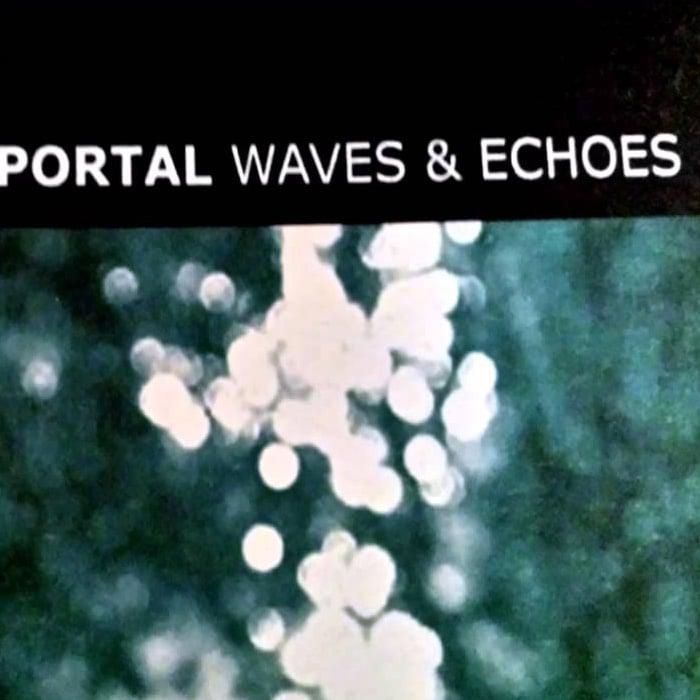Waves & Echoes by Portal (Review)

One thing I’ve always loved about shoegazer/dreampop/ethereal music is how well the song titles, and even the band monikers, go towards describing the sound — almost like a strange form of onomatopoeia. Can you think of a more perfect moniker for Slowdive than, well, Slowdive? Or a more perfect song title for “Vapour Trail” than, well, “Vapour Trail”? As such, it doesn’t surprise me that a band working in this genre would name themselves “Portal,” and that they would release an album entitled Waves & Echoes containing songs with titles like “Trace” and “Light At The Centre.”
It just makes sense. Indeed, on songs like “Quartet,” with it’s gentle glissandoes and cloud-like drifts of sound that rank right up there with July Skies’ finest, the band called Portal does conjure up something otherworldly. “Consumed” employs the same “little girl lost” sound as lovesliescrushing and to equal effect, as Rachel Hughes’ delicate vocals struggle to keep their head above Scott Sinfield’s churning, rumbling drones, glitches, and sonic textures.
“Resolution” consists of a simple piano melody ringed about by shimmering drones, the whole piece draped with enough crackle and hiss to give it the evocative feel of some longlost childhood memory. And “Light At The Centre,” appropriately enough, is one of the disc’s brighter moments, with ringing guitar tones circling around an insistent, constantly building beat.
There are moments where the disc feels a little weaker than it should. Sinfield has the atmospheric side of things down to a science. The problems lie with some of the electronic rhythms and programming that he employs. For example, “Trace” could be a minimal, haunting piece centered solely on Hughes’ vocals and the ghostly bell-like tones that chime off in the distance. However, some rather nondescript programming keeps the otherwise hallunicatory song locked, dead and center, when it might’ve been a bit more affecting had it been allowed to meander and wander around a bit.
While most of the disc’s tracks remain fairly song-oriented in their structure, regardless of how blissed out they might become, the band eschews that for the album’s final track, a 15-minute movement of drones that had originally been composed for the Broadcast Art Group in 2004. The piece begins with murky layers of drone that slowly shift amongst themselves before giving way to a serene, minimalist structure of crystalline tones. At 15 minutes, the piece is perhaps 4 or 5 minutes too long, even though the sounds employed by the group are, as is everything else on here, routinely gorgeous.